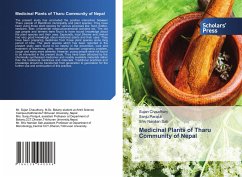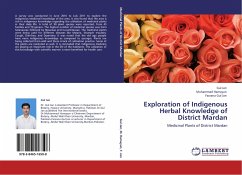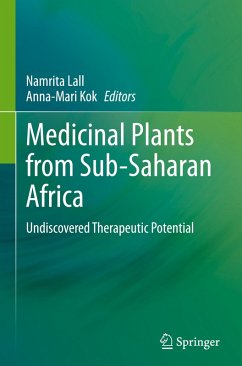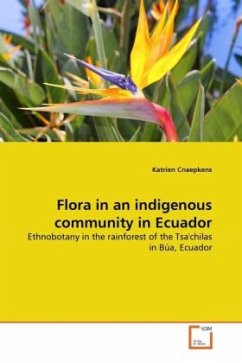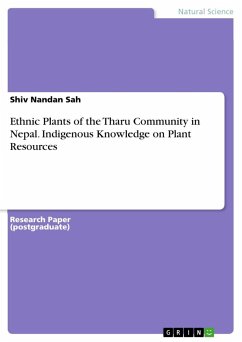
Ethnic Plants of the Tharu Community in Nepal. Indigenous Knowledge on Plant Resources

PAYBACK Punkte
0 °P sammeln!
Research Paper (postgraduate) from the year 2019 in the subject Biology - Botany, grade: First, Tribhuvan University (Central Campus of Technology,Dharan,Sunsari,Nepal), course: B.Sc. Botany, language: English, abstract: This paper analyses the ethnic plants of the Tharu people in the Ramdhuni-2 Sunsari district in Nepal, their various uses and the socio-cultural aspect of Tharus and explores those plant uses. Participatory Rural Appraisal (PRA) and the Interview-Method were used for the collection of ethnobotincal data from the studied area. In the present study, 37 plants species were collec...
Research Paper (postgraduate) from the year 2019 in the subject Biology - Botany, grade: First, Tribhuvan University (Central Campus of Technology,Dharan,Sunsari,Nepal), course: B.Sc. Botany, language: English, abstract: This paper analyses the ethnic plants of the Tharu people in the Ramdhuni-2 Sunsari district in Nepal, their various uses and the socio-cultural aspect of Tharus and explores those plant uses. Participatory Rural Appraisal (PRA) and the Interview-Method were used for the collection of ethnobotincal data from the studied area. In the present study, 37 plants species were collected from the study area under 25 families.Out of 37 plants 32 were found to be dicot and 5 were found to be monocot. 37 species were distributed in 25 families. The indigenous Tharus were using these plant species for various purposes, such as medicine, food, fodder, ornaments, materials etc. Among those plants 25 plants are used as medicine, 21 plants are used as fodder, followed by 10 plants as food and edible fruits and so on. Among the 37 species, trees and herbs were dominant upon grasses, shrubs, climbers and creepers, followed by shrubs. 24 species were used for their leaves. 29 species were found to be useful having more than one value.Ethnobotany refers to the study of an ethnic plant of particular people living in a particular place. Ethnobotany accommodates lists, details and description of all those plants regarding their various uses. This study has been done in the Ramdhuni-2, Sunsari district in the Tharu community.




